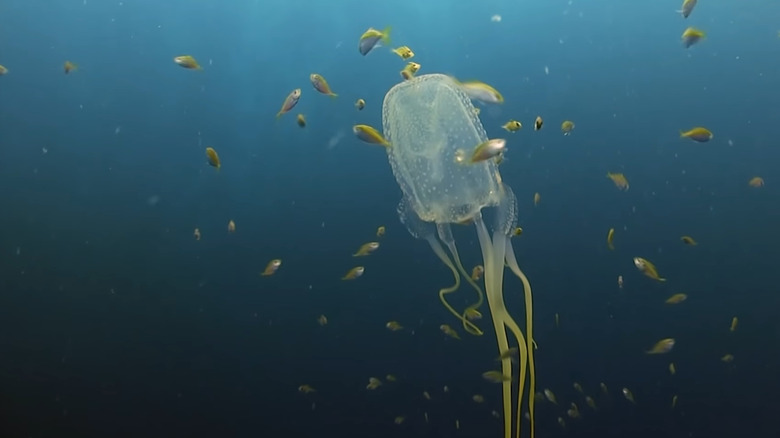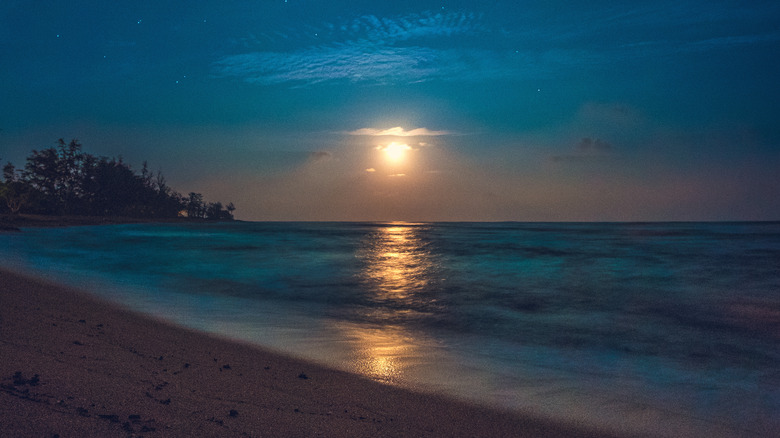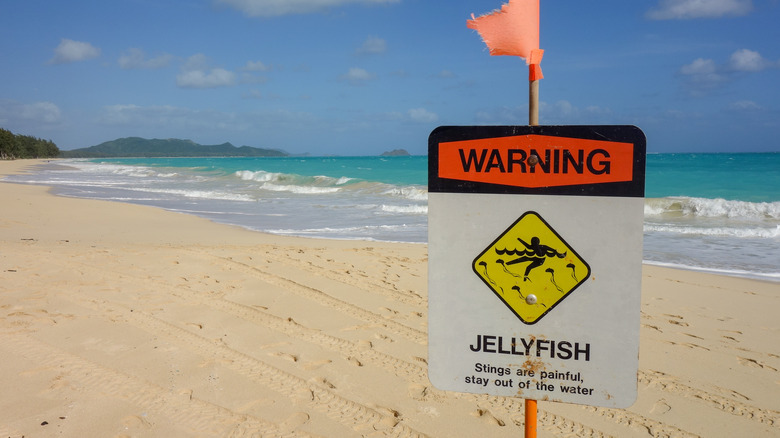The Best Tip To Completely Avoid Jellyfish On Your Tropical Vacation To Hawaii
On January 16, 2023, jellyfish stung at least 150 people visiting Hawaii and trying to enjoy the beach. These stings came from box jellyfish, a name that many have come to fear because a few species can kill humans with their stings. However, you likely won't encounter the lethal variety around Hawaii. None of the staggering 150 stings on January 16 proved fatal, but they were extremely painful and landed one teenage beachgoer in the hospital. So, how can you avoid getting hit with the stinging poison barbs on jellyfish tentacles during your own trip? Look to the moon.
Jellyfish appear to follow the lunar calendar and arrive in the shallow waters near Hawaii's beaches eight to 10 days after the full moon. Bizarre as it sounds, if you hope to swim or snorkel around locations like Hawaii's Big Island without being stung, you can check the date of the last full moon and calculate whether or not your visit will coincide with peak jelly time. If you worry about miscounting, consult the local weather report or Waikiki Aquarium's Box Jellyfish Calendar. The latter's jelly forecast predicts which days visitors will likely encounter the most jellyfish in the water.
Why box jellyfish follow the moon
Jellyfish arrive on Hawaii's beaches so consistently that it's possible to create a forecast. That's tremendously helpful when planning a snorkeling trip in Hawaii, but why does this happen? As described by Rebecca Helm, director of the Helm Lab at the University of North Carolina, Asheville, on her educational The Helm Lab Blog, it remains unclear how much jellyfish know and understand the world around them. While they do not have brains, they can move their bodies with the intention of eating and escaping threats. Box jellies, like those found in Hawaii, have displayed courtship behavior to attract mates.
Mating behavior may hold the key to understanding why these jellyfish seem to follow a schedule. Researchers led by biochemist Angel Yanagihara have tracked the monthly appearance of jellyfish for decades. This led to an important insight: box jellies seem to head to shore to reproduce. "We found that the dangerous monthly shoreline appearance of the Hawaiian Box Jellyfish, correlates with the specific nights of the lunar month—referred to as Kāloa in the Hawaiian calendar—with a critical number of hours of darkness after sunset and before moonrise," Yanagihara told Phys.org. "The period of the lunar cycle with a key number of hours of darkness or the 'absence of light' cues mature animals to specifically swim to the shore line to spawn."
Check conditions before getting in the water
Follow the jellyfish forecast for the best chance of ensuring you won't enter an area of water at the same time as large numbers of box jellyfish. This issue primarily impacts South-facing beaches. However, even if you time your visit to avoid these areas after the full moon, you should still watch the weather reports while in Hawaii. Windy days may result in jellyfish getting blown closer to shore at times when you wouldn't usually find them there. Monitor the forecast and pay special attention to reported jelly conditions.
On the most dangerous days, like January 16, 2023, when over 150 beachgoers got stung, you'll often encounter signs on the beach warning about jellyfish. Always watch for these warnings not to go into the water. If a beach has officially closed because of jellyfish activity, stay away until it reopens. Rescheduling your outing may be frustrating, but it beats a painful jellyfish sting.


